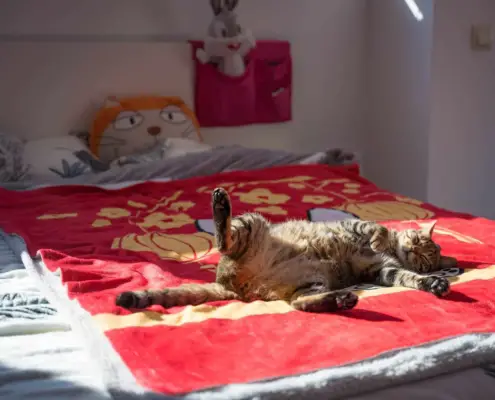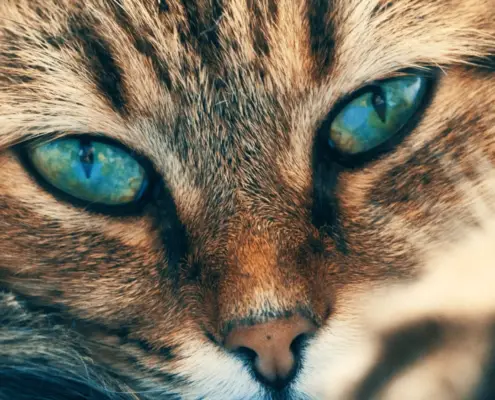
Cats have always been enigmatic creatures, captivating humans with their mysterious behavior and independent nature. One aspect of feline behavior that has fascinated cat owners and researchers alike is their response to eye contact. Many cat lovers wonder if their feline friends appreciate or even understand eye contact. In this article, we will delve into the world of cats’ preferences for eye contact and explore how it can strengthen the bond between you and your furry companion.
Can cats understand eye contact?
Cats are highly perceptive animals, and they have a remarkable ability to read human body language. While they may not comprehend eye contact in the same way humans do, they can certainly sense and interpret our intentions through our gaze. When you make eye contact with your cat, they can pick up on subtle cues, such as your facial expressions and the tone of your voice. This understanding helps them gauge your mood and respond accordingly.
The significance of eye contact in cat communication
Eye contact plays a crucial role in cat communication. In the feline world, direct eye contact is seen as a sign of dominance or aggression. When two unfamiliar cats lock eyes, it can escalate into a territorial dispute or a fight. However, when it comes to the relationship between humans and cats, the dynamics are different. While prolonged eye contact may make cats uncomfortable, brief and gentle eye contact can convey trust and affection.
How do cats perceive eye contact?
Cats have their own unique way of perceiving eye contact. Unlike humans, who often perceive direct eye contact as a sign of attentiveness and engagement, cats view it differently. For them, prolonged eye contact can be seen as a threat or a challenge. This is because in the wild, staring directly at another animal is a sign of aggression. It is important to remember that cats are solitary hunters by nature, and they rely on their instincts to survive.
Do cats like it when you make eye contact with them?
The answer to this question varies from cat to cat. While some cats may enjoy gentle eye contact with their owners, others may find it uncomfortable or threatening. It is essential to pay attention to your cat’s body language and respect their boundaries. If your cat avoids eye contact or looks away when you try to engage with them, it may be a sign that they are not comfortable with prolonged eye contact. On the other hand, if your cat maintains eye contact with you and blinks slowly, it is a positive sign that they feel safe and at ease.
Signs that your cat is comfortable with eye contact
Understanding your cat’s body language is key to deciphering their preferences for eye contact. When your cat is comfortable with eye contact, they may exhibit the following signs:
- Relaxed posture: A relaxed cat will have a loose body posture, with their tail held upright or slightly curved. They may also have their ears in a neutral position.
- Slow blinking: Cats often communicate affection and trust through slow blinking. If your cat maintains eye contact and blinks slowly at you, it is a clear indication that they feel safe and content in your presence.
- Purring: Purring is a sign of contentment in cats. If your cat purrs while making eye contact with you, it shows that they are relaxed and enjoying your company.
Signs that your cat is uncomfortable with eye contact
On the other hand, if your cat is uncomfortable with eye contact, they may display the following signs:
- Dilated pupils: When a cat is stressed or anxious, their pupils may dilate. If your cat’s eyes appear unusually large or their pupils are fully dilated, it is a sign that they are feeling threatened or overwhelmed.
- Direct avoidance: Cats that are uncomfortable with eye contact will often avoid looking directly at you. They may turn their head away or avert their gaze to signal their discomfort.
- Aggressive behavior: In extreme cases, a cat that feels threatened by eye contact may exhibit aggressive behavior, such as hissing, growling, or swatting. It is crucial to give your cat space and avoid any confrontational situations.
Building trust through eye contact with your cat
While cats may have varying preferences for eye contact, it is possible to build trust and strengthen your bond with them through this form of communication. Here are some tips to effectively connect with your feline friend through eye contact:
- Respect their personal space: Cats value their personal space, so it is essential to approach them calmly and avoid invading their comfort zone. Allow your cat to approach you on their terms, and if they show signs of discomfort, give them the freedom to retreat.
- Use soft eyes: When making eye contact with your cat, avoid staring directly at them. Instead, use soft eyes and blink slowly to convey relaxation and trust. This mimics the behavior of contented cats and can help your feline friend feel more at ease.
- Offer positive reinforcement: Reward your cat with treats or gentle petting when they respond positively to eye contact. This positive association will reinforce their trust in you and encourage them to engage more comfortably in the future.
Understanding and respecting your cat’s preferences for eye contact
In conclusion, cats have their own unique preferences when it comes to eye contact. While some cats may enjoy brief and gentle eye contact as a form of bonding, others may find it uncomfortable or threatening. It is crucial to observe your cat’s body language and respect their boundaries. By understanding and respecting your cat’s individual preferences, you can establish a deeper connection and strengthen the bond between you and your feline friend.
Remember, every cat is different, and what works for one may not work for another. Pay attention to your cat’s cues and always prioritize their comfort and well-being. By doing so, you can ensure a harmonious and fulfilling relationship with your feline companion.
If you enjoyed my article, I would appreciate you sharing it with your network.

Sima Ndlebe
Sima writes for CatBuzz. He is interested in Cats, Health and Fitness, and Entrepreneurship.
Published: 27 April 2024




